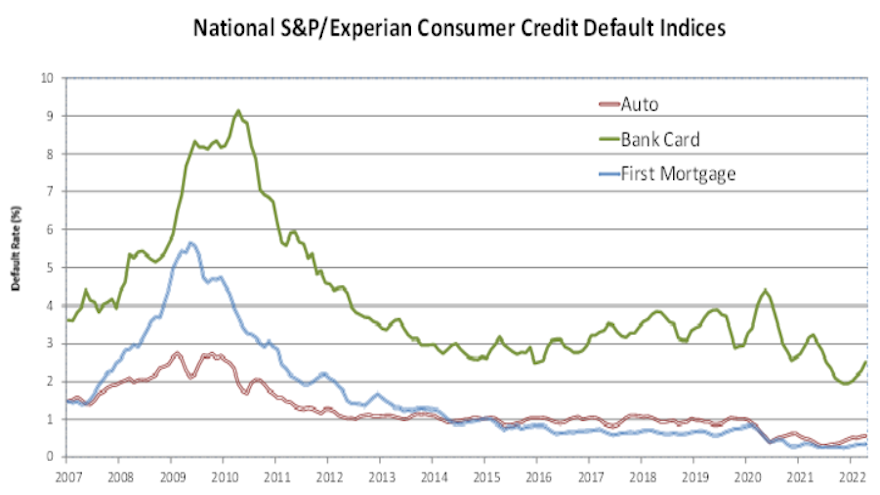Auto defaults at highest point since end of 2020

Chart courtesy of S&P Dow Jones Indices and Experian.
By subscribing, you agree to receive communications from Auto Remarketing and our partners in accordance with our Privacy Policy. We may share your information with select partners and sponsors who may contact you about their products and services. You may unsubscribe at any time.
It’s been a gradual climb, but the auto default rate for May ticked up to the highest point analysts have seen since the end of 2020.
S&P Dow Jones Indices and Experian released data through April for the S&P/Experian Consumer Credit Default Indices this week, and the auto default rate rose 2 basis points to 0.58%.
The rate now has climbed by at least 1 basis point during 10 of the past 11 months, rising up from the all-time low of 0.30% set last June. But no sequential rise has been by more than 4 basis points during that stretch.
The reading in December 2020 was 0.64%.
For even more context, the S&P Dow Jones Indices and Experian data going back 10 years also shows that the latest reading still has a quite a bit to rise before reaching the high point of the past decade, which was 1.15% generated in September 2013.
Meanwhile, the composite rate — which represent a comprehensive measure of changes in consumer credit defaults — also increased 2 basis points to 0.50%, marking the fifth consecutive month of upticks.
Subscribe to Auto Remarketing to stay informed and stay ahead.
By subscribing, you agree to receive communications from Auto Remarketing and our partners in accordance with our Privacy Policy. We may share your information with select partners and sponsors who may contact you about their products and services. You may unsubscribe at any time.
Analysts said the bank card default rate increased 25 basis points to 2.52%, while the first mortgage default rate was unchanged at 0.35%.
Looking next at the five major metropolitan areas S&P Dow Jones Indices and Experian track each month, two cities moved higher on a sequential comparison.
Analysts found that Miami’s had the largest increase, moving 4 basis points higher to 0.80%. Chicago’s reading rose 1 basis point to 0.53%.
Dallas’ rate fell 4 basis points to 0.52% while New York’s reading dropped two basis points to 0.78%. Los Angeles’ entry was 1 basis point lower at 0.38%.
Jointly developed by S&P Indices and Experian, analysts noted the S&P/Experian Consumer Credit Default Indices are published monthly with the intent to accurately track the default experience of consumer balances in four key loan categories: auto, bankcard, first mortgage lien and second mortgage lien.
The indices are calculated based on data extracted from Experian’s consumer credit database. This database is populated with individual consumer loan and payment data submitted by lenders to Experian every month.
Experian’s base of data contributors includes leading banks and mortgage companies and covers approximately $11 trillion in outstanding loans sourced from 11,500 lenders.


